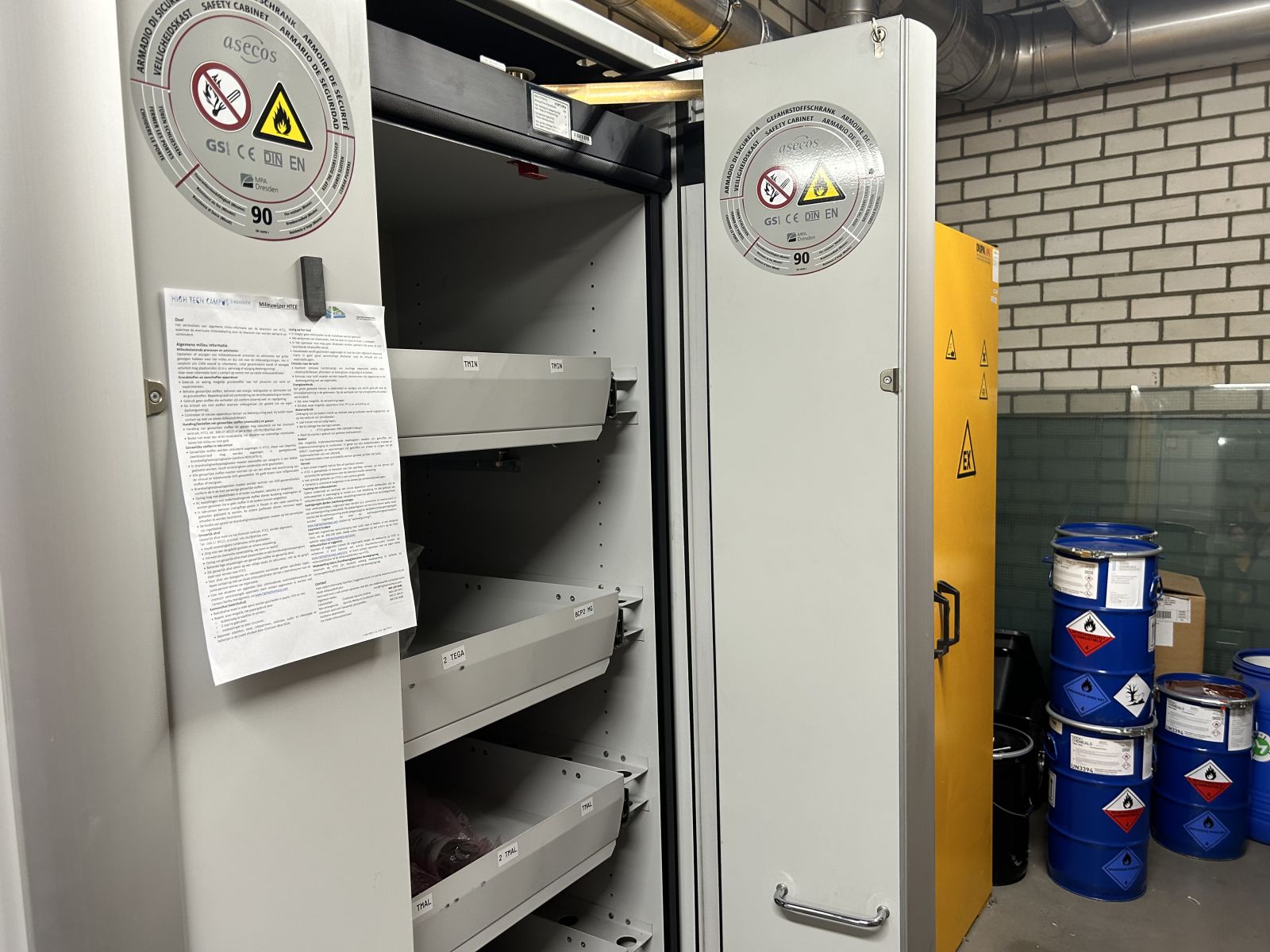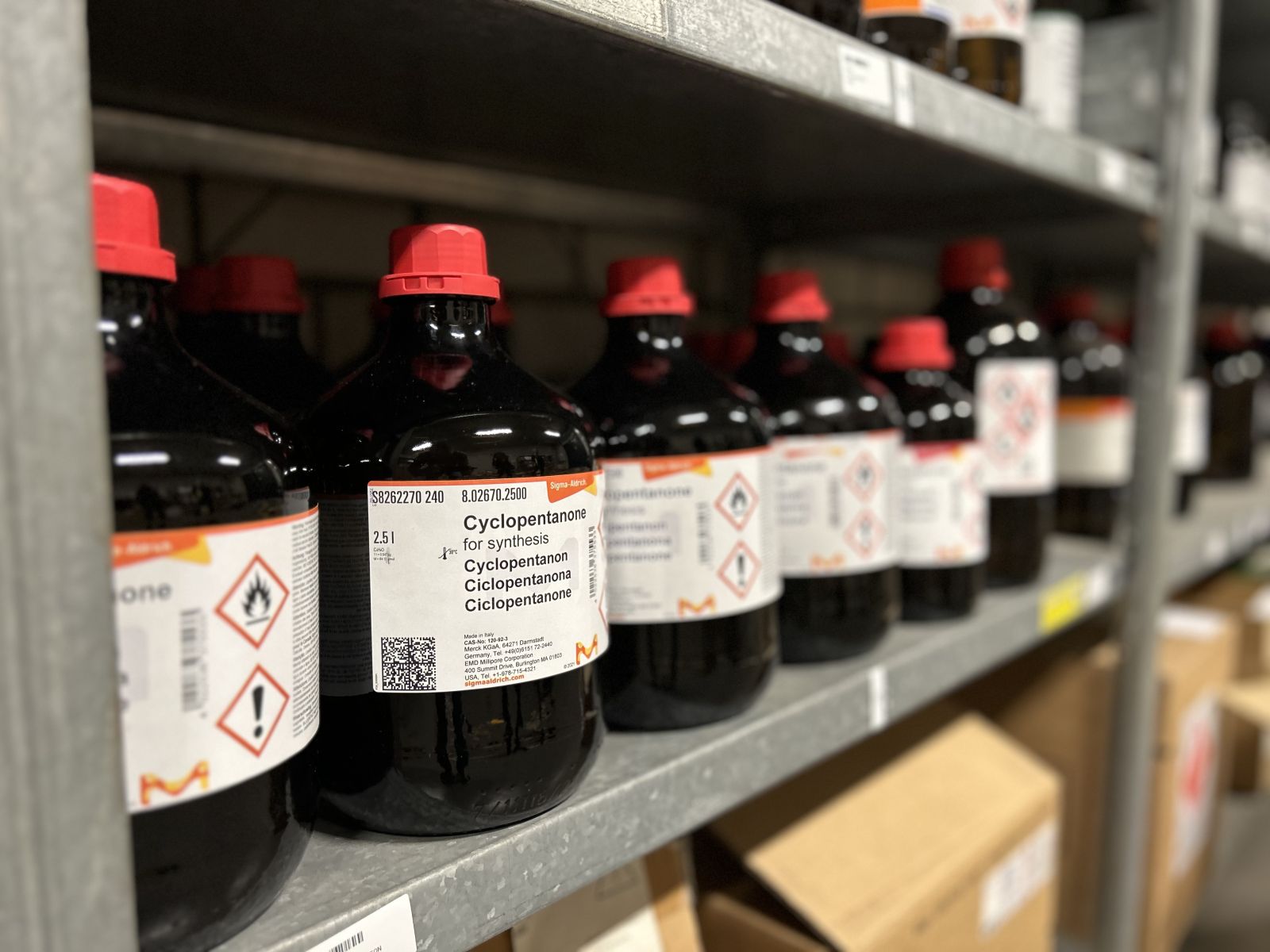Hazardous substances and labelling
Hazardous substances, according to environmental legislation, are all substances classified in accordance with the ADR (Accord européen relatif au transports international des marchandises Dangereuses par Route). You can find the ADR class of a substance in chapter 14 of the Material Safety Data Sheet (SDS/MSDS). In addition to the ADR class, environmental legislation uses the GHS (Globally Harmonized System), which are white checks with red borders. WMS labels (orange symbols) are prohibited.
Delivery/removal of hazardous substances
All hazardous substances must be delivered and disposed of through the Chemical Center (HTC2). This is because all hazardous substances are registered at the Chemical Center. With this record, CVM can manage the amount of hazardous materials at HTCE, as listed in the environmental permit. Contact the Chemical Center to make arrangements with them about ordering, delivering and disposing of hazardous goods.
Chemical Center contact information: 040-27 30123 / info.htc2@philips.com.
Storage of hazardous substances
Storage of hazardous materials must take place in HTC2, the Chemical Center. There may be a working inventory and minimal amounts of storage available on location within your organization.
 If your organization wishes to have more than 50 liters/kilogram of hazardous materials on site, storage must be in a fire safety storage cabinet. If a safety storage cabinet is required by law, all hazardous materials must be placed in this cabinet at the end of the workday. Storage in a fume hood, for example, is not permitted.
If your organization wishes to have more than 50 liters/kilogram of hazardous materials on site, storage must be in a fire safety storage cabinet. If a safety storage cabinet is required by law, all hazardous materials must be placed in this cabinet at the end of the workday. Storage in a fume hood, for example, is not permitted.
If your organization is located in a basement or on the first floor of a building that does not have a basement, soil-hazardous substances must be placed in/on a sufficiently large drip pan.
Safety storage cabinet requirements
The Hazardous Materials Publication Series 15: 2016 lists the requirements for a safety storage cabinet. A safety storage cabinet must function properly. Therefore, maintenance must take place. This can be done by periodically checking your cabinets (or having them checked).
Warning signs should be placed on the outside of the safetycabinet in clearly visible places, indicating the danger of the stored substances. You can do this by displaying the GHS symbols of the substances stored in the cabinet on the doors.
Quantity and location of hazardous substances
In your partial permit application, you have specified the maximum amount of hazardous substances present within your organization per ADR class. You must demonstrably ensure that the maximum permissible quantities per ADR class are not or cannot be exceeded.
Partial permit/plan of attack
Before storing/using hazardous materials, a partial permit must be issued by CVM. Desired changes must therefore be requested from CVM with a change permit at least 4 weeks prior to the change.
The location of safety storage cabinets, gas cabinets and loose gas cylinders must be included in the attack plan. Your organization is required to communicate the (changed) location of safety storage cabinet(s), gas cabinet(s) and/or loose gas cylinder(s) via email: tech.info.beheer@hightechcampus.com.